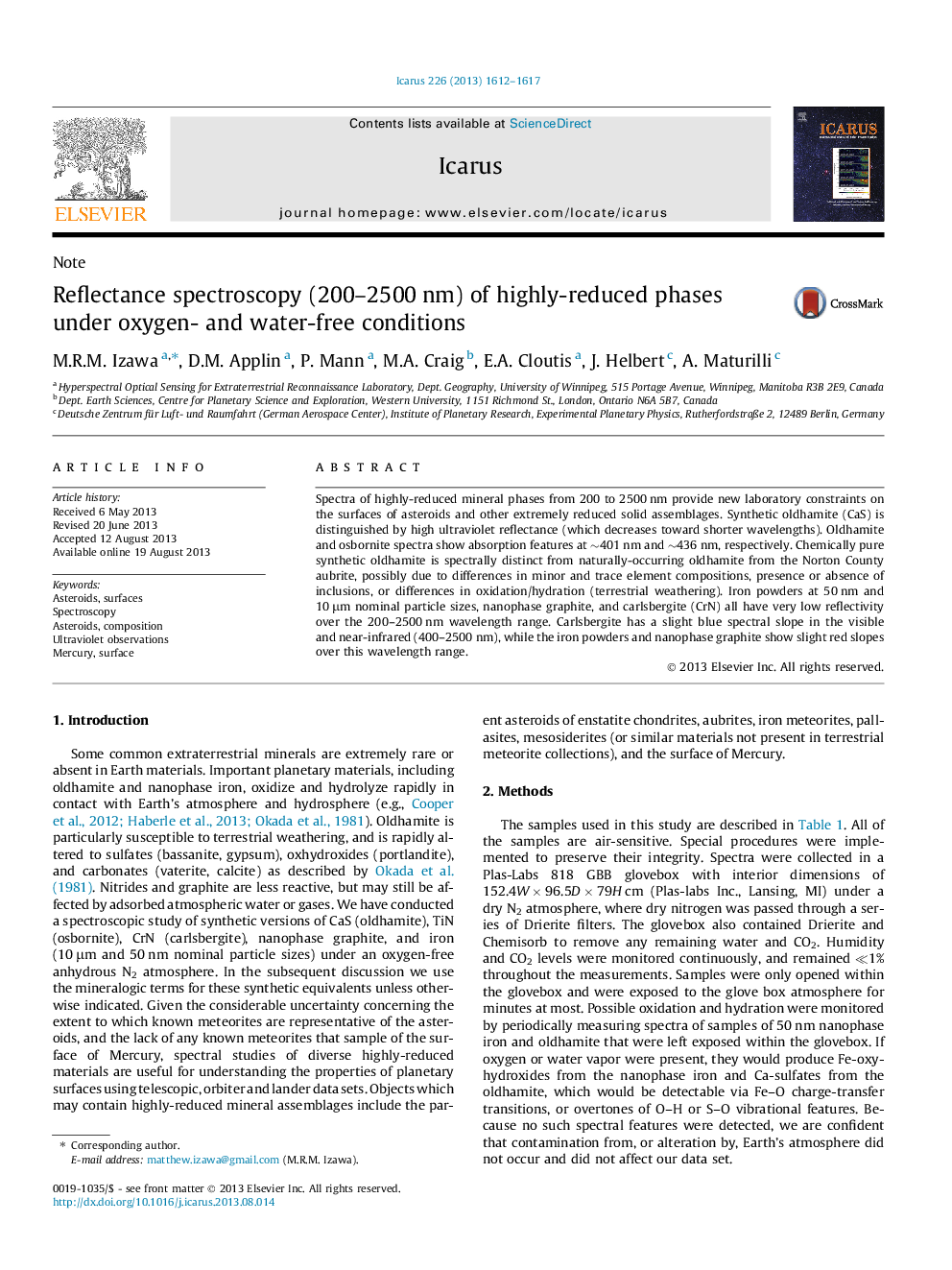| Article ID | Journal | Published Year | Pages | File Type |
|---|---|---|---|---|
| 10701403 | Icarus | 2013 | 6 Pages |
Abstract
Spectra of highly-reduced mineral phases from 200 to 2500 nm provide new laboratory constraints on the surfaces of asteroids and other extremely reduced solid assemblages. Synthetic oldhamite (CaS) is distinguished by high ultraviolet reflectance (which decreases toward shorter wavelengths). Oldhamite and osbornite spectra show absorption features at â¼401 nm and â¼436 nm, respectively. Chemically pure synthetic oldhamite is spectrally distinct from naturally-occurring oldhamite from the Norton County aubrite, possibly due to differences in minor and trace element compositions, presence or absence of inclusions, or differences in oxidation/hydration (terrestrial weathering). Iron powders at 50 nm and 10 μm nominal particle sizes, nanophase graphite, and carlsbergite (CrN) all have very low reflectivity over the 200-2500 nm wavelength range. Carlsbergite has a slight blue spectral slope in the visible and near-infrared (400-2500 nm), while the iron powders and nanophase graphite show slight red slopes over this wavelength range.
Keywords
Related Topics
Physical Sciences and Engineering
Earth and Planetary Sciences
Space and Planetary Science
Authors
M.R.M. Izawa, D.M. Applin, P. Mann, M.A. Craig, E.A. Cloutis, J. Helbert, A. Maturilli,
